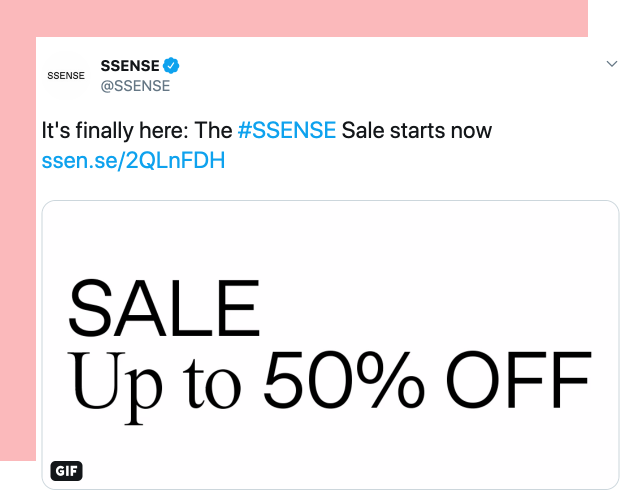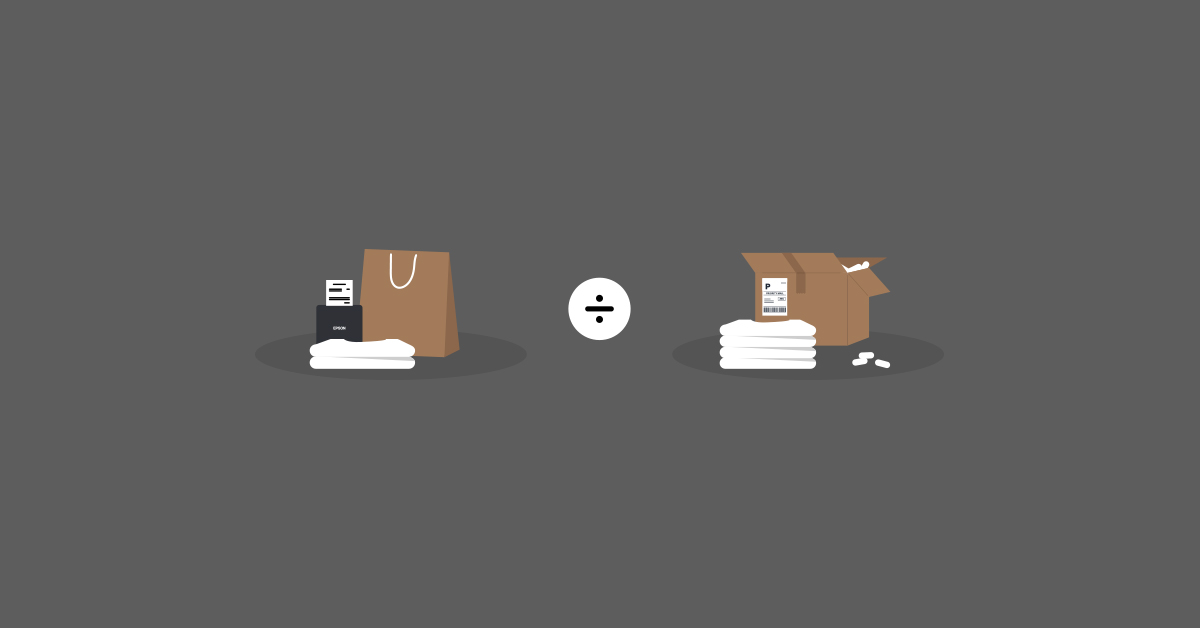
Markdowns are a reality for any retailer. A markdown is when a retailer permanently lowers a product’s price to increase the sales of that item. Unlike a sale or promotion, a markdown is when a retailer permanently lowers the price of an item.
A markdown can have a big impact on your gross margins. In the United States alone, markdowns cost retailers $300 billion, which accounts for 12% of total retail sales in 2018. If you don’t want markdowns to severely impact your bottom line, it’s important to be proactive and have an actionable retail markdown strategy in place.
Keeping this in mind, let’s take a look at the purpose of markdowns and how you can use them to move your products off shelves while maintaining advantageous margins and growing your sales.
Your POS system is the heartbeat of your store
Manage inventory, customers and employees, ring up sales and run everything behind the scenes with Lightspeed, the complete commerce platform designed for the modern retailer.
The purpose of markdowns
The first step in creating an effective retail markdown strategy is to clearly define your goals. After all, your goals will determine how you structure your markdown strategy. Depending on your goals and situation, either a markdown or discount could be the best route to take.
What’s the difference between a markdown and a discount?
A markdown is when a retailer permanently reduces the price of an item because it wasn’t selling at its original price.
Here’s an example. Let’s say you bought a sweater for $50 and set its retail price at $150. After a few months of slow sales, you decide to mark the sweater down by 33%, bringing its retail price to $100.
Your original gross margin was 300%, which is huge. But if you aren’t selling any sweaters, that gross margin isn’t doing you any good. After the markdown, your gross margin drops to 200%, but your rationale is that the lower price will incite more sales of that sweater. Rather than lose profits altogether, you can still make up for it by selling a higher volume.
A discount is when a retailer reduces an item’s price based on the type of customer making the purchase. Examples include student and senior citizen discounts. Discounts are used to lure in customers that match that profile. Discounts, however, do not affect an item’s retail price for all customers, only those who meet the discount’s criteria (like being enrolled in college or carrying a senior citizen card).
Markdowns happen when you significantly reduce an item’s price in order to clear it out or recoup part of your investment while discounting is a strategy put in place early on — often before you even source the inventory you’re going to discount — to attract customers and increase sales.
Depending on your goals, either a discount or a markdown will be the best strategy to take. So let’s clearly define them.
Define your goals
If your goal is to get rid of inventory that hasn’t sold well and recoup as much of your initial investment as possible, a markdown could be the best way to do so. If your goal is to attract a certain clientele, creating a discount that applies to specific customer groups is a great way to achieve that goal.
Acknowledge when a promotion is necessary
A gift-with-purchase (GWP) or buy-one-get-one-free (BOGO) strategies are an excellent way to incentivize customers to make a purchase while liberating your store of old inventory that wasn’t selling at full, discounted, or marked down prices.
Gift-with-purchase
GWPs add excitement to a customer’s retail experience while enabling you to get rid of otherwise unsellable inventory. To run a successful GWP, start by pinpointing how much you want to upsell your customers.
For example, let’s say the gift you’re giving away is an umbrella that you bought for $5. Your original markup was 400%, bringing its retail price to $20. Your objective is to get rid of these umbrellas while still turning a profit, so consider setting up a GWP along these lines:
Spend $100, get a free gift (the umbrella).
Assuming the margins of your other products are as advantageous as that of the umbrella, this strategy assures that you’re getting rid of your umbrellas while maximizing how much a customer spends to receive one as a gift.
Buy-one-get-one-free
In a report from AMG, 66% of shoppers say they like BOGO the most our of all promotion types, with 93% of shoppers taking advantage of a BOGO deal in the past.
Their popularity can be traced back to their perceived value. Shoppers are more likely to engage in a BOGO deal because the products are perceived as having no extra cost, making them seem more valuable.
Shoppers unmistakenly put an irrational premium on the word “free”. In his book Predictably Irrational, behavioral economist Dan Ariely conducted a study where he gave participants the choice between two offers. One was a free $10 Amazon gift card, the other was the opportunity to buy a $20 gift card for only $7. More people chose the $10 free gift card over the $20 gift card even though the latter provided more value.
Retailers can take advantage of the irrational power of “free” with a BOGO deal. They have the potential to increase how much each of your customers’ spend while enabling you to quickly get rid of inventory that is otherwise difficult to sell.
Before you start marking down or discounting products, you need to assure that the strategy you implement corresponds with your store’s existing pricing strategy.
Consider your store’s pricing strategy
There are three types of pricing strategies that any product in any industry can fall into: Budget, value, and luxury. Each of these three pricing strategies targets different consumers and come with unique markdown and discount opportunities that you need to be aware of.
Budget pricing strategy
This pricing strategy targets price-conscious consumers who place a high degree of importance on an item’s cost. This pricing strategy typically serves customers who are willing to sacrifice quality for affordability.
If you are using this pricing strategy, you’re probably selling a high volume of items with low per-unit profitability, which means that markdowns are rarely advantageous. Since your objective is to sell at a high volume, deals like BOGO and GWP are both effective and help you achieve your store’s goals.
Luxury pricing strategy
In this segment of the market, low prices are actually a bad thing, since low prices are often unconsciously correlated with low quality. In fact, low prices can actually detract from a luxury brand’s image.
A luxury pricing strategy places more importance on assuring that an item’s price correlates with the brand’s image and high perceived value. Contrary to a budget pricing strategy, for perceivably luxury items, low prices are actually a bad thing as they are often unconsciously correlated with low quality and prestige.
Using this pricing strategy places a high degree of importance on brand image. Along with focusing on strong marketing to firmly place your brand in the luxury category, don’t be afraid to charge high prices. Deals and promotions are rarely suggested, but of course, there are exceptions to this rule.
Value pricing strategy
This pricing strategy sits in between both the budget and luxury pricing strategy and places importance on striking a balance between a product’s cost and its quality.
Value shoppers won’t sacrifice quality for the sake of low prices but aren’t willing to pay too high of a premium simply for a brand’s perceived value. They want quality items that will last for years, without breaking the bank.
Luxury retailers can strategically leverage their already high perceived product value to strategically discount their old inventory and yield a high volume of sales from value-conscious shoppers. For example, popular international luxury retailer SSENSE has two, and only two, sales per year. One for Winter, one for Summer.

Image source: SSENSE
This sale is when SSENSE liquidates the previous season’s inventory and makes room for new products while maintaining high margins. Even when a luxury item is parked down at 50% below retail, they’re still turning a profit — plus, they sell a high volume of merchandise in a short span of time.
While budget retailers have little flexibility for discounts or markdowns, luxury retailers can strategically use them to move inventory while maintaining high-profit margins per item sold.
Use agile pricing online and in-store
Agile pricing is when you keep your price-points flexible so you can easily price-match or undercut the competition or raise your prices if your competitors run out of a specific item. Unquestionably, agile pricing strategies help you maximize profits for each item you sell.
Not surprisingly, online marketplaces like Amazon use agile pricing models to ensure that their price points reflect fluctuations in both supply and demand. In fact, Amazon changes prices every 10 minutes.
If you want the flexibility to modify your prices and have them be reflected both in your online and brick-and-mortar shop, consider moving to a cloud-based point of sale system. With it, you can adjust prices in real-time and have those changes live on each of your sales channels instantly.
Wrapping up the best retail markdown strategies for 2024
While markdowns and discounts aren’t right for every type of retailer, when used under the right circumstances they can certainly help get rid of old inventory while turning a profit.
Just make sure that you consider your store’s pricing strategy and positioning before you decide whether to mark down or discount any items. Understand what motivates your customers, what they value, and how you can manipulate your item costs to maximize how much you sell short-term while maintaining a consistent brand identity long term.

News you care about. Tips you can use.
Everything your business needs to grow, delivered straight to your inbox.


